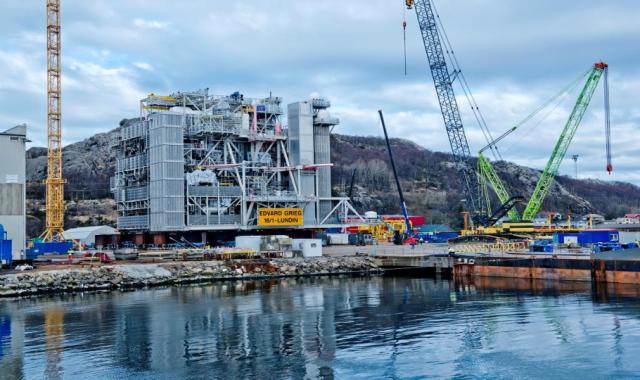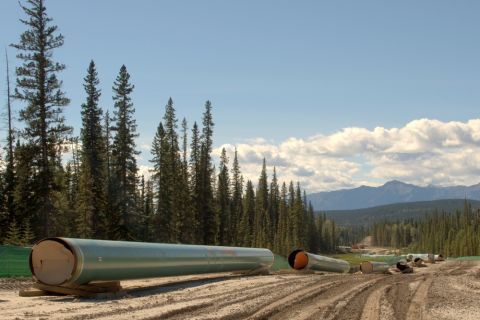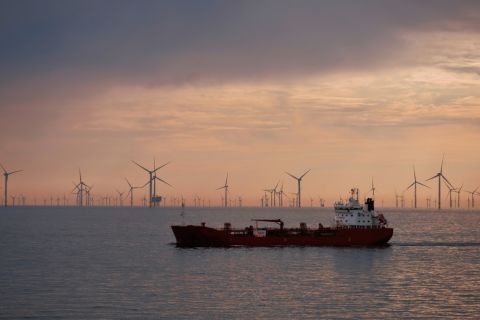
Loadout of the Edvard Grieg topsides is seen. The next phase is hookup and commissioning. (Source: Lundin)
Fifty years on from a newspaper advertisement heralding Norway’s first offshore licensing round, the oil and gas sector in the country continues to take center stage with a swathe of major offshore projects being developed.
“Those 36 lines in the newspaper advertisement changed Norway, and it is probably the most profitable ink ever in our history,” energy minister Tord Lien said.
Now, after 40 years of production, less than half of the recoverable resources on the Norwegian Continental Shelf (NCS) have been produced, and there is still much more to come.
Lien says the 50th anniversary is well worth celebrating because oil and gas is by far Norway’s most important industry and will continue to play a vital role for many years ahead.
He added a note of caution, however. “It is fair to say we have not seen the full consequences of the fall in oil prices, but already projects have been postponed and the investment level is expected to be down 15% compared to the very high levels in 2014. I am, however, confident that the Norwegian petroleum industry also this time will adjust and weather the storm.
“The industry has been through tough times before and has always come back stronger.”
He highlighted the Johan Sverdrup project, which is due to start production in 2019, as one of the cornerstones that will help the recovery.
Statoil’s Kjetel Digre, the Johan Sverdrup project director, said the reservoir, which contains 1.7 Bbbl to 3 Bbbl of recoverable oil and was just missed by 200 m (656 ft) by a 1976 exploration probe, will be developed in phases.
The first phase involves the establishment of a field center consisting of four platforms—living quarters, processing, drilling and riser.
“In 2018 we want to get two main platforms in place—the drilling platform and the riser platform—and they will be operating together to tie existing wells in and then commence further drilling up toward production startup in late 2019,” he said. “In 2019 the process platform and the living-quarters platforms will be hooked up to create the field center.”
Johan Sverdrup phase 1 will be supplied with power from shore with a transformer on Kårstø delivering direct current to the riser platform, ensuring an estimated 80 MW.
Digre said the partnership including Lundin, Det norske oljeselskap, Maersk Oil and Petoro is now looking into concepts for future development phases, and there are a number of alternatives, including subsea and further platforms being considered to tap the oil from the whole reservoir.
The field lifetime will be 50 years, with an anticipated plateau production of 550,000 boe/d to 650,000 boe/d.
Innovation On Aasta Hansteen
Although Johan Sverdrup is the jewel in the crown for Statoil, the company also has a number of other major projects in development.
The Aasta Hansteen field development, which is expected to be ready for startup toward the end of 2016, includes the first spar platform on the NCS.
The risers transporting the gas from the seabed to the platform and further to Polarled will be pure steel, which will also be a first on the NCS.
Gas will be piped to shore through Polarled, a new 480-km (300-mile) gas pipeline from Aasta Hansteen to Nyhamna in Møre og Romsdal County. Condensate will be loaded to shuttle tankers at the field.
Statoil is also in the process of developing the Gina Krog (previously Dagny) oil and gas field with a fixed platform, while the wells will be drilled with a mobile jackup drilling rig. Liquids will be transported via tankers and the gas via the Sleipner Field.
Other upcoming developments on the NCS are at Martin Linge, Maria, Zidane, Snadd and Rutil.
But Norwegian consultant Rystad Energy says that four developments have been delayed—Johan Castberg, Snorre 2040, Tommeliten Alpha and Vette (previously Bream)—and that investments of more than $12.5 billion have been postponed until after 2020.
Statoil said the partners in Johan Castberg (previously Skrugard), which is located about 100 km (62 miles) north of the Snøhvit Field in the Barents Sea, have decided to spend “more time” to make the final concept selection for the project.
They are looking to mature an FPSO solution for the field while continuing to investigate a production platform (semi) as a possible offshore development solution.
Room For Others
Offshore Norway is not just all about Statoil, however, and a number of other companies are developing major projects in the region.
The FPSO vessel for Eni’s Goliat oil field in the Barents Sea will shortly be on station after recently completing its 15,700-nautical-mile journey from South Korea on the Dockwise Vanguard heavylift vessel.
Vetle Dalan, subsea technology manager for Eni, said that the aim is to start up production from the field via the FPSO vessel in late summer this year.
He said current activity on the field, which had been due onstream in 2013, involves the drilling of two wells, while five wells have already been fully drilled and completed.
Goliat, which will become the northernmost oil field in the world, will be produced through a total of 22 wells with 11 producers, nine water injectors and two gas injectors.
Two 12-in. subsea pipelines have been installed, and the subsea production system will provide the means for injecting chemicals to prevent hydrate, wax and scale formation. Subsea installation took place in 2011 and 2012.
“Sophisticated oil spill monitoring equipment has been installed on the field,” Dalan said. “A capacitance sensor has been installed on each well slot. Three acoustic sensors have also been installed on each template, which are able to be replaced subsea. A total of 80 sensors are in place.”
Eni will be using satellite imaging as well as planes, helicopters and standby vessels to detect acute spills and to monitor the movement of any spills.
The Sevan Marine-designed floater, the world’s largest cylindrical floater yet built, weighs 64,000 tons, is 117 m (384 ft) in diameter and 75 m (246 ft) tall, and is designed to hold up to 1 MMbbl of crude oil.
Power will be provided from land, while oil will be exported by shuttle tankers. Associated gas will be reinjected, while the possible export of gas is also being evaluated.
Edvard Grieg Ramps Up
Another operator with eyes on the prize off Norway is Lundin, which is developing the Edvard Grieg Field in the Utsira High area.
The field, which was proven in 2007 with exploration well 16/1-8, is due onstream in fourth-quarter 2015.
A total of six exploration and appraisal wells have been drilled on the Edvard Grieg Field, which contains undersaturated oil without a gas cap. The field’s gross 2P reserves are estimated at 186 MMboe.
The Edvard Grieg Field development solution consists of a fixed platform with a full process facility, dry wellheads with external jackup drilling and living quarters.
Lundin Norway Managing Director Kristin Færøvik said, “Our flagship project Edvard Grieg is a $3 billion development. We have chosen an EPC [engineering, procurement and construction] contract with very high Norwegian content, and that has been very successful. It has been delivered on time and on budget.”
The topsides have recently been completed, and the next phase is hookup and commissioning.
Meanwhile, Total is progressing its Martin Linge Field. Oil and gas production is expected to start in 2016 with a capacity of 80,000 boe/d.
Development involves the construction of an integrated wellhead, production and accommodations platform. Gas from the field will be exported to the U.K. via the FUKA gas pipeline.
Total says the project will set a precedent for sustainability by supplying the field’s power needs from the Norwegian mainland grid via a 170-km (106-mile) subsea cable.
Recommended Reading
US Refiners to Face Tighter Heavy Spreads this Summer TPH
2024-04-22 - Tudor, Pickering, Holt and Co. (TPH) expects fairly tight heavy crude discounts in the U.S. this summer and beyond owing to lower imports of Canadian, Mexican and Venezuelan crudes.
Imperial Expects TMX to Tighten Differentials, Raise Heavy Crude Prices
2024-02-06 - Imperial Oil expects the completion of the Trans Mountain Pipeline expansion to tighten WCS and WTI light and heavy oil differentials and boost its access to more lucrative markets in 2024.
US Gulf Coast Heavy Crude Oil Prices Firm as Supplies Tighten
2024-04-10 - Pushing up heavy crude prices are falling oil exports from Mexico, the potential for resumption of sanctions on Venezuelan crude, the imminent startup of a Canadian pipeline and continued output cuts by OPEC+.
Oil Broadly Steady After Surprise US Crude Stock Drop
2024-03-21 - Stockpiles unexpectedly declined by 2 MMbbl to 445 MMbbl in the week ended March 15, as exports rose and refiners continued to increase activity.
Veriten’s Arjun Murti: Oil, Gas Prospectors Need to Step Up—Again
2024-02-08 - Arjun Murti, a partner in investment and advisory firm Veriten, says U.S. shale provided 90% of global supply growth—but the industry needs to reinvent itself, again.



